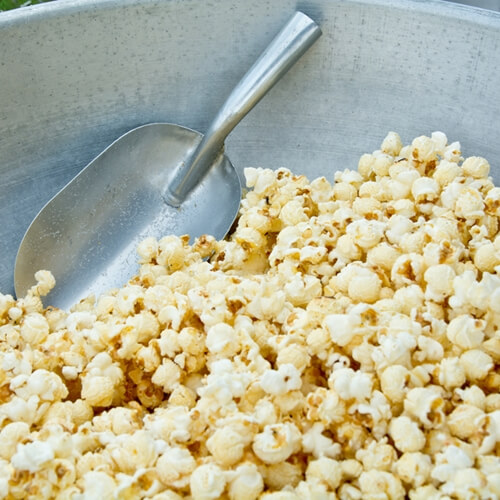Get Popping: 3 Tips For Excellent Kettle Corn Every Time
If you happen to attend a state fair this fall, you’ll just might be lured to the food section by the aroma of freshly made kettle corn. With a history dating back several hundred years, kettle corn differs from traditional popcorn because it’s cooked with refined sugar and oil. Though this tasty variety is traditionally made in cast iron kettles, many chefs are now able to make it directly from his or her own kitchen. Want a sweet treat while avoiding the endless lines of your local fair? Here are a few tips to get your kettle corn recipe popping:
Necessary equipment
Unless you’re willing to spring for that large cast iron kettle or an actual popcorn machine, you’ll be limited to whatever tools you have around the kitchen. Luckily, you don’t need a lot of equipment when it comes to making kettle corn. According to The Kitchn, the essential items include:
- A 4-quart pot with lid.
- A long-handled spoon.
- Baking sheet – something sturdy with decent side supports.
- Parchment paper.
All about the oil
Oftentimes, not enough consideration is given toward the oil used in making kettle corn. This is a somewhat costly mistake for chefs, as the oil can have a noticeable effect on the final taste of your popcorn. As Real Simple pointed out, there are a few different options for oil to choose from, all of which work regardless of the specific kind of popcorn. Canola oil is not only the healthier option, but it also has a high smoking point, which means it won’t burn as easily. Olive oil has a much more rich flavor, but it does burn far easier than canola oil. Meanwhile, if you want something that’s akin to most popcorn varieties found at movie theaters, opt for either coconut or palm oil.
Consider your corn
Much like oil, the corn you use has a significant impact on your final bowl of tasty goodness. As Agricultured explained, there are several kernel varieties used in most popcorn recipes, and each one is unique from its counterparts. The most common kernels are:
- Regular: These are the kernels used most frequently in popcorn recipes. They have larger hulls, which are the outer sections that get stuck in your teeth.
- Rainbow blend: This is actually a mixture of several different kinds of kernels, and gives you a number of varying sizes and shapes.
- Baby white hulless: These kernels are among the smaller varieties that are available. Smaller popcorn usually means much more tender popcorn overall.
- Midnight Blue: As you might have guessed, these kernels have a distinct blue tint. The resulting popcorn has an added bit of crunch to it over other kinds.
Perfect your kettle corn making skills when you enroll in culinary academy today!


